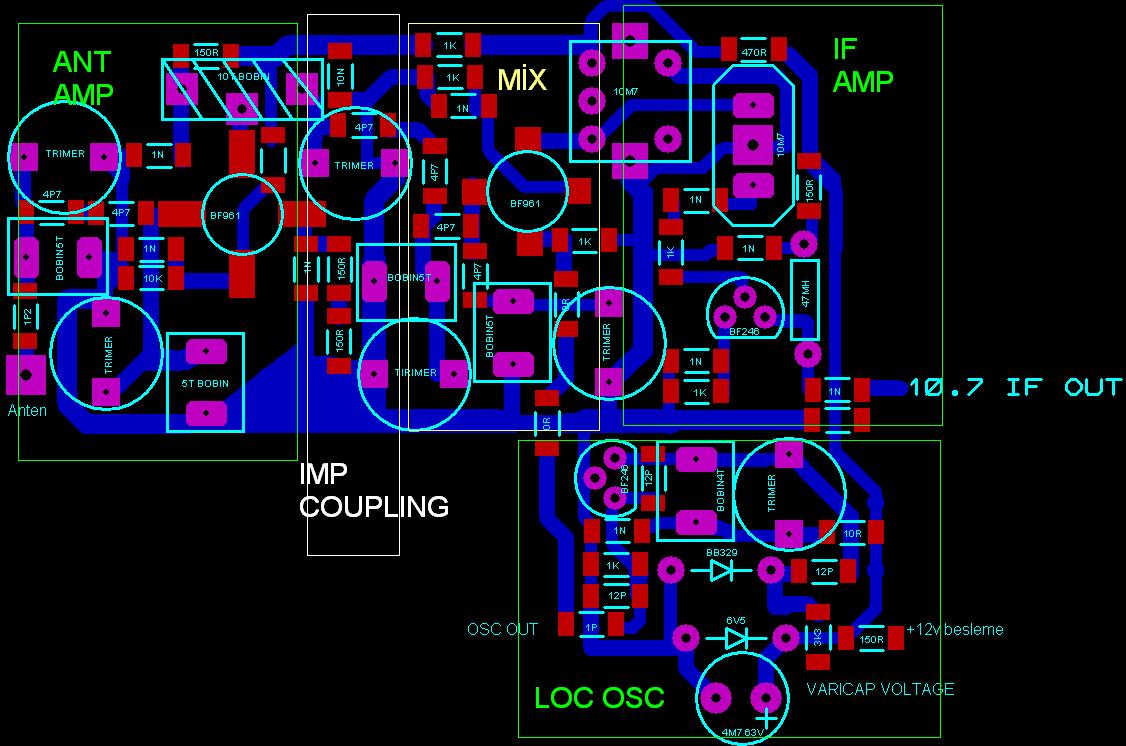cmosbjt
Full Member level 5

resistive mixer
I am designing a FET resistive mixer using E mode pHEMT.
The initial design has good matching and port to port isolation.
But it has poor IIP3 (only 1 dBm).
So how to choose the device size and bias voltage for better IIP3?
The attached image shows the DC I-V curve of the device I use.
I am biasing it with 0.5V Vgs. Is there something wrong?
thanks a lot
cmosbjt
The latest measurement result is updated here in this post.
Hi my friends,
I finally have my mixer fabricated and tested. Here are some of the testing results. I'd like to continue the discussion on how to improve the mixer IP3.
I have 2 mixers tested.
The 1st one has a channel width of 250 X 5 um
The 2nd one has a channel width of 250 X 8 um
Both mixer has similar conversion Gain, about -7 dB.
You can see from the attached pictures, the IIP3 of both mixers is in the range of 20 to 30 dBm.
Here are some observations:
* The LO to RF isolation is not very good. Since the IF Freq is low, RF and LO Freq are close. It is hard to improve L2R iso by filtering.
* I do see the IIP3 is about 6 to 10 dB higher than P1dB(in) for this topology (Resistive FET mixer)
* I don't see a bigger (larger channel width) device has better IIP3.
** Does a FET device with longer channel length has better IIP3 ???
But I do want to point out that this is not always true. For some of my LNA designs (SiGe), IIP3 is more than 15dB higher than P1dB(in).
From the measurement result, I don't see a bigger device (with 8 fingers) has better IIP3 than a smaller device (with 5 fingers).
I am designing a FET resistive mixer using E mode pHEMT.
The initial design has good matching and port to port isolation.
But it has poor IIP3 (only 1 dBm).
So how to choose the device size and bias voltage for better IIP3?
The attached image shows the DC I-V curve of the device I use.
I am biasing it with 0.5V Vgs. Is there something wrong?
thanks a lot
cmosbjt
The latest measurement result is updated here in this post.
Hi my friends,
I finally have my mixer fabricated and tested. Here are some of the testing results. I'd like to continue the discussion on how to improve the mixer IP3.
I have 2 mixers tested.
The 1st one has a channel width of 250 X 5 um
The 2nd one has a channel width of 250 X 8 um
Both mixer has similar conversion Gain, about -7 dB.
You can see from the attached pictures, the IIP3 of both mixers is in the range of 20 to 30 dBm.
Here are some observations:
* The LO to RF isolation is not very good. Since the IF Freq is low, RF and LO Freq are close. It is hard to improve L2R iso by filtering.
* I do see the IIP3 is about 6 to 10 dB higher than P1dB(in) for this topology (Resistive FET mixer)
* I don't see a bigger (larger channel width) device has better IIP3.
** Does a FET device with longer channel length has better IIP3 ???
You are right. I am using 17 & 20dBm LO in my testing, but how can I further improve the IIP3? Thanks.VSWR said:I don't think you can get IIP3 of 30 dBm of a resistive FET mixer, having only 0 dBm of LO drive level. You neet at least 15-20 dBm LO drive.
Yes, the measurement result does shows about 7 to 10 dB difference between IIP3 and P1dB (IP3 is higher). I don't have a plot here, but I have about 18~21 dBm P1dB from my mixers.khouly said:the IP3 is related to the 1 dB compression point , it should be about 10 dB higher
Khouly
But I do want to point out that this is not always true. For some of my LNA designs (SiGe), IIP3 is more than 15dB higher than P1dB(in).
Definetely 20dBm IIP3 is not a problem for my device as you can see from the testing result. I have a very similar mixer (different device) from other company, it have more than 30 dBm IIP3. And the spec lower limit is 30dBm.khouly said:20 dBm of LO power is very high , i think 20 dBm IIP3 , may be the limit of your transistor , try to use larger device , with 350 um gate width
khouly
Hi gszczesz,gszczesz said:cmosbjt,
When creating a 20dBm IP3, you will need to generate an P1dB of 10dBm. This is a large power and will require a large device, which means the input impedance into the device on the LO and RF side will be low. This will require to have a large matching network and will force the design to be more narrow band.
Obviously you acheived 1dBm IP3 with a -9dBm P1dB. Just scaling everything to be 10X Larger, re-matching the circuits and increasing the LO drive by 20dB will give you the IP3 you require since the P1dB will be increased to be over 10dBm.
Remember that you also need to scale down the IF impedance equally. When you scale up the circuit, you are preserving the voltage swings and increasing the current levels. So if you increase your circuit by 10X in size, the IF section needs to drop in resistance by 10X. Everything needs to scale.
Greg
From the measurement result, I don't see a bigger device (with 8 fingers) has better IIP3 than a smaller device (with 5 fingers).







